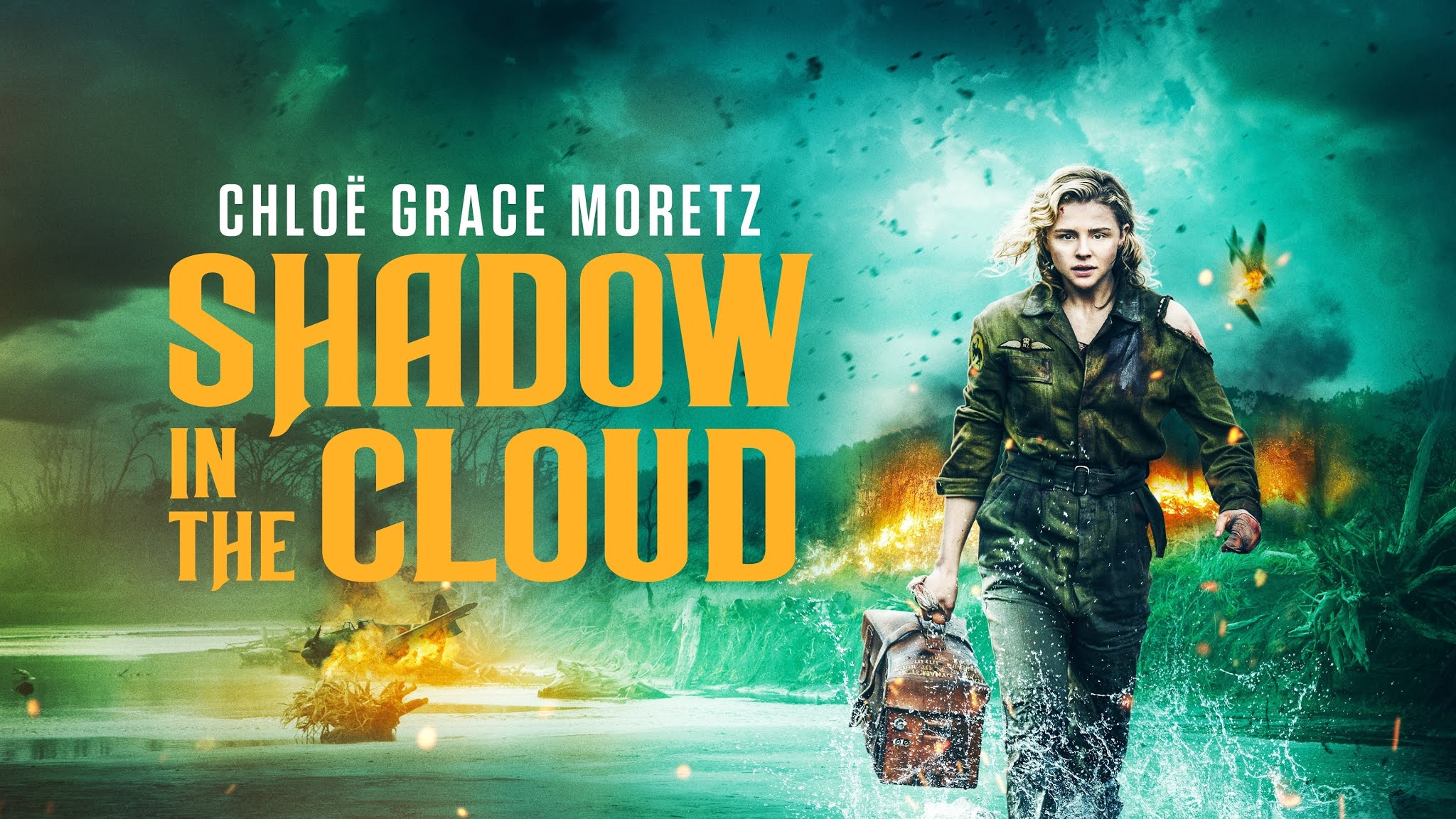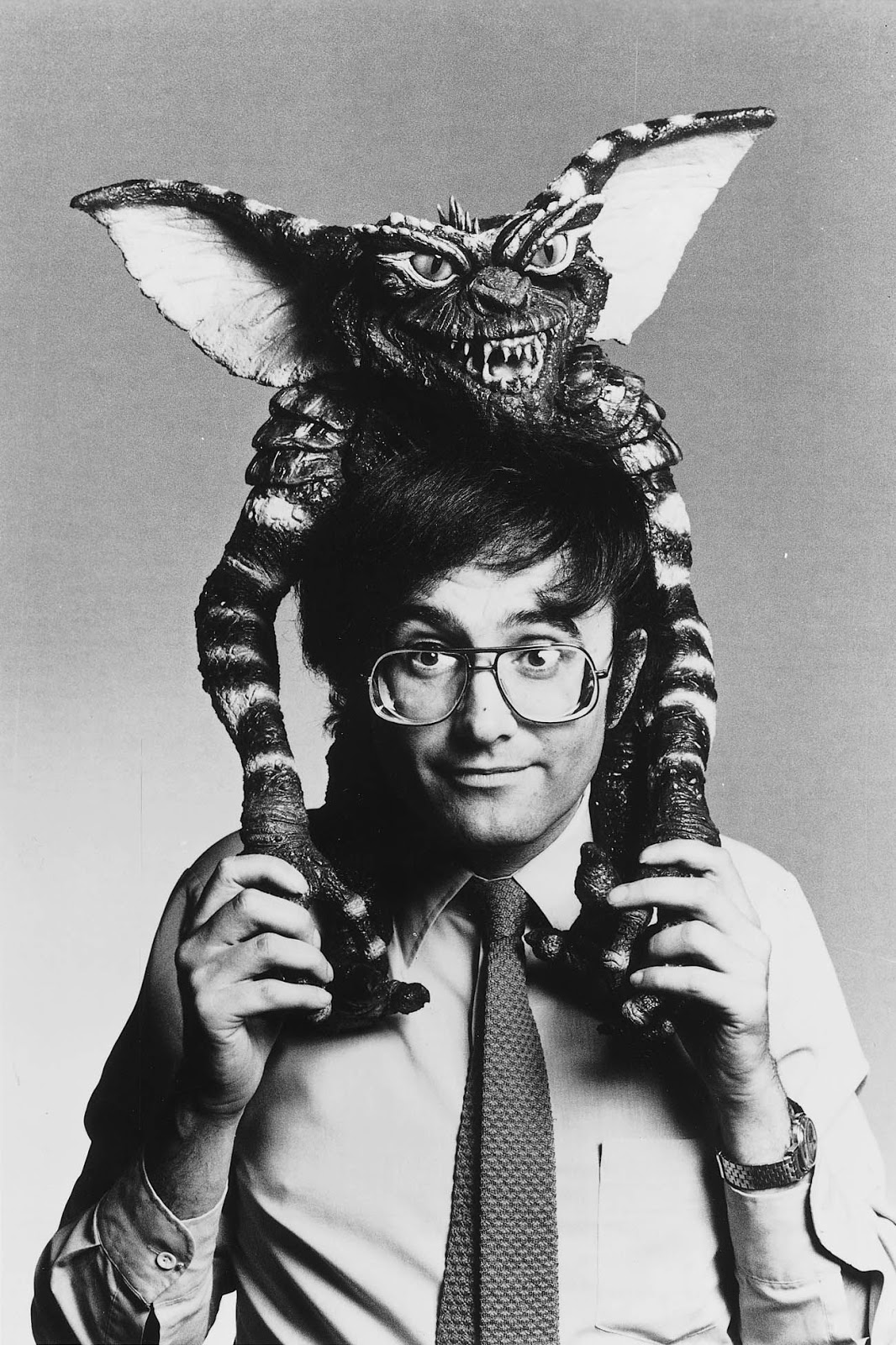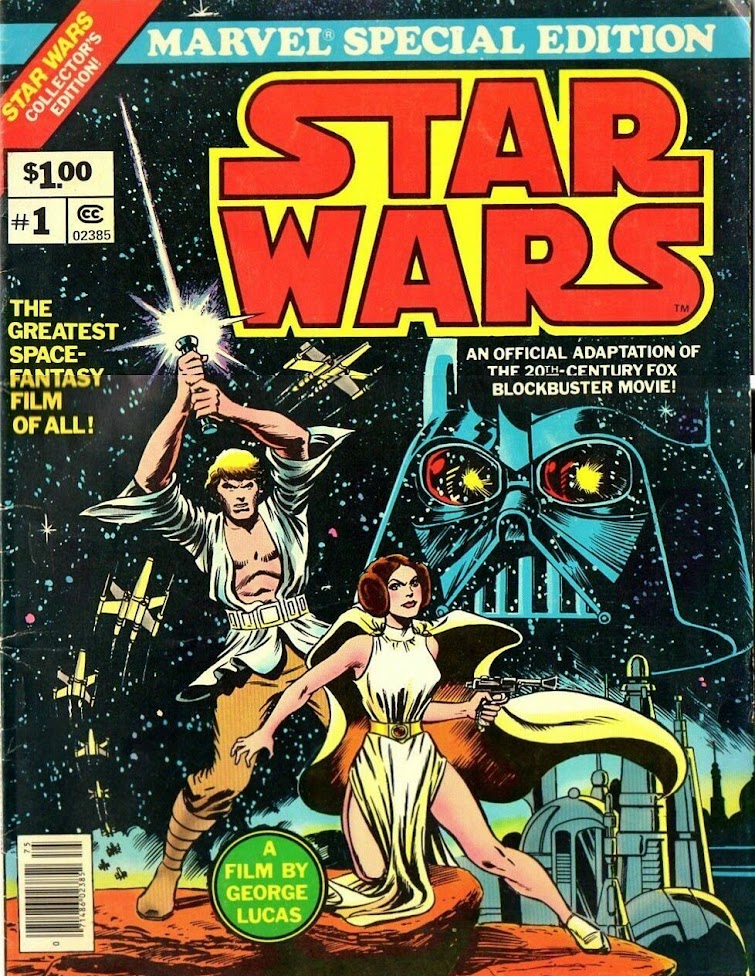Movie Review: SHADOW IN THE CLOUD (and a few words about Gremlins)
Every once in a while, I discover a movie pretty much the
same way I used to do in my youth; It comes out of nowhere, just an impromptu
trailer or an ad in the papers to let me know of its existence, instead of the
months of promotion and buzz that surrounds most modern blockbusters, ubiquitous to the
point you have to protect yourself from the dreaded and unavoidable "Spoilers".
SHADOW IN THE CLOUD is such a surprise for me, and a most
pleasant one at that, for that matter. But I'll get to that in a moment.(And for you to fully appreciate the film, I invite you to AVOID the trailer, which reveals a couple of those surprises.)
The first action feature film for director Roseanne Liang is told pretty much all from the point of view of flight officer Maude Garrett who boards a B-17 Bomber in New Zealand during WWII, towing with her a precious cargo, part of a secret mission from her higher ups. The all-male crew of the plane welcomes her with all the expected sexism and machismo one could expect, and they force her to spend the flight in the gun turret under the plane, leaving her secret documents in the custody of a sympathetic airman.
However things become more complex as Japanese aircrafts starts roaming dangerously close, and a bat-like creature starts terrorizing Maude and ripping apart the engine of the plane, to the disbelief of the male crew, unaware of the ongoing carnage.
It would be hard to ignore the obvious feminist subtext, but also the strong metaphor of women being set aside, demeaned and ignored, Being literallyput down, verbally and physically, underneath men, all the while doing essential work while hanging on for dear life. Casting Chloé Grace Moretz, who has shown her aptitude for badassery in a number of previous films (KICK-ASS 1 and 2 and LET ME IN), was an inspired touch, and she once more demonstrates that she can be indeed a force to be reckoned with, asMaude can easily take her place now as one of Cinema's most ferocious bad-ass heroines alongside Sarah Connors, Ripley or Furiosa.
 |
| Icon of Badassery Chloé Grace Moretz in SHADOW IN THE CLOUD. |
The fact that Moretz herself suffers from claustrophobia transpires in her performance, adding weight and tension as she struggles to control her panic inside the terrifyingly confined space of the rickety turret.
But the film isn't only a socially relevant feminist
manifesto (as also laid out beautifully in the touching end credits montage showing
historical footage of women serving in the military during WWII), but also a terrific creature feature in its own right with a rather accurate depiction of a
"gremlin" if we are to believe some recollections of aviators
who would describe them as "bat-like" (although other
accounts describes infinitely more cartoonish creatures). Liang builds up tensions
expertly as the film piles up surprises after surprises, leading to edge-of
your seat thrills that often defies the laws of physics, but by that point, you
are so invested in the characters that you relish every over-the top moments,
sustained by a cool retro synth score by Mahuia Bridgman-Cooper.
Kudos must be given also to the opening animated scene, paying tribute to the classic "Private SNAFU" short films of the forties, while also acknowledging the gremlin lore prevalent at the time in the military and in a couple of Warner brothers cartoons from the era. A clever way to foreshadow the theme of the film, and its occasional cartoony feel.
Roseanne Liang had already demonstrated her knack for strong female characters in her short action film DO NO HARM (which she would love to turn into a feature), and her script (rewritten from a previous version by Max Landis) is tight and straight to the point. She apparently would love to move in to bigger action pictures, and I can't imagine producers not taking note of her ample talents in that field as demonstrated by this latest output. I wouldn't be surprised to see her attached to one of those female-lead Marvel movies in the foreseeable future, for instance.
SHADOW IN THE CLOUD was my first film of 2021, and one can only hope that this is the sign of things to come, as it was a fun, rollicking great way to start the year.
 |
| Propaganda poster from 1942 or 1943, from the Office for Emergency Management. War Production Board. |
A FEW WORD ON GREMLINS
Of course, the term "Gremlin" became an integral part of
popular culture in the eighties with the release of Joe Dante's smash hit
GREMLINS in 1984, but as expressed by the Dick Miller character in the film,
Gremlins have been part of aviator lore for over a century by now, and show no signs of going away.
First accounts of gremlins, although they had yet to obtain that moniker, was recounted in a 1918 issue of the British magazine THE SPECTATOR; “the old Royal Naval Air Service in 1917 and the newly constituted Royal Air Force in 1918 have detected the existence of a horde of mysterious and malicious spirits whose purpose in life was…to bring about as many as possible of the inexplicable mishaps which, in those days as now, trouble an airman’s life.”
The word "Gremlins" started appearing in the early 1920s as Royal Air Force pilots would keep blaming them for crashes, accidents or even misplaced or lost equipment. But it is at the dawn of WWII that the lore took flight, as American journalists assigned to the US Air Force would start to build up the legend by publishing a series of stories in the newspapers, exposing the myth to the American public. They would also share with the public information about the wide variety of Gremlins, both friendly and fiendish.
 |
| January 1943 issue of the Philadelphia Inquirer, featuring a story on the many types of gremlins. (Click image to see full size) |
Australian fighter pilot Mark Sheldon, who believes in the existence of the mischievous creatures, has a particular view of them; “The whole thing is, they more or less reflect your mood. If you fly carefully and well, they treat you good; if you fly badly, they act badly by you.”
Maude herself, a member of the WASPs (American Women’s Airforce Service Pilots, founded in 1943) could have worn the badge that sported their mascot, Fifinella, a benevolent female gremlin.
 |
| A badge of Fifinella for the 319th Army Air Force Flying Training Detachment. |
The mascot was the brainchild of Walt Disney, who jumped on the Gremlins bandwagon in 1942, and started working on a projected animated film with writer Roald Dahl. He even tested the waters with a column appearing nationwide in newspapers in late December 1942.
Roald Dahl, himself a 26 year old fighter pilot at the time, remembers being courted by Disney in his 1978 memoir LUCKY BREAK;
“Because of the Gremlins, I was given three weeks’ leave from my duties at the Embassy in Washington and whisked out to Hollywood [in the summer of 1942]. There, I was put up at Disney’s expense in a luxurious Beverly Hills hotel and given a huge shiny car to drive about in.”
 |
| Painting by Bill Justice for Roald Dahl's book THE GREMLINS. |
 |
| Walt Disney and Roald Dahl, surrounded by Gremlins and contemplating the lucre of potential merchandising. |
The project eventually died down as Disney was unable to acquire the copyright of the term "Gremlins", and Dahl's employer, The British Air Ministry, kept insisting on script approval. In the end, the project ended up being a book published by Random House in 1943, with illustrations by Disney Studio stalwart and legendary animator Bill Justice. (The book was reprinted in 2006 with an introduction by Disney Aficionado Leonard Maltin.) Disney also created the character of Gremlin Gus which appeared in Issues 33–41 of Walt Disney’s Comics and Stories, published from June 1943 to February 1944.
 |
| A page from the adventures of GREMLIN GUS from the pages of Walt Disney’s Comics and Stories. Copyright 1943, Walt Disney Productions. |
By then, Gremlins had also appeared in two classic Warner Brothers cartoons, both by Bob Clampett; FALLING HARE (1943) where Bugs Bunny is stuck on a plane with a gremlin, and RUSSIAN RHAPSODY, where a hosts of "Gremlins from the Kremlin", most being caricatures of animators at the studio, are sabotaging a plane piloted by Adolf Hitler.
A gremlin also makes an appearance in a dream sequence in Joe May's 1944 film JOHNNY DOESN'T LIVE HERE ANYMORE.
 |
| Gremlins from the Kremlin confront Adolf in Bob Clampett's RUSSIAN RHAPSODY. (1944) |
After the war, Gremlins kind of slowly vanished from the radar in popular culture, and only made their return in the eighties, save for an unforgettable 1963 TWILIGHT ZONE episode where William Shatner encounters such a creature on the wing of his commercial flight, based on the Richard Matheson novel NIGHTMARE AT 20,000 FEET. That very episode would be remade by director George Miller in the 1983 film TWILIGHT ZONE: THE MOVIE, starring John Lithgow in a hysterical performance.
The following year, Joe Dante released the horror comedy GREMLINS, that would definitely bring back the word in the popular vernacular. Even though he also directed a segment of TWILIGHT ZONE: THE MOVIE, Dante wasn't inspired by Miller's segment. Reached for comments, he specifies:
"Actually I was already developing GREMLINS when I was asked to join the Twilight Zone movie, so George Miller's episode was not an influence.
I had of course seen the Bugs Bunny cartoon and had read the Roald Dahl book, so the idea of Gremlins as avatars of entropy was something I was keen on using in the movie, which turned out to be a more family-friendly version of (screenwriter Chris) Columbus' original take on it as a gory horror film".
 |
| Joe Dante and fiend. |
Dante
would reluctantly comply to Warner Bros. demands for a sequel in 1990, where he
opted for a more anarchic, parodic and chaotic tone, where all bets were off.
In a recent interview, he stated: “We decided to do a movie that not only made fun of the first movie and all those horror movie tropes, but got away with some social satire as well.”
Afterwards, Gremlins appeared in a number of television shows, mainly cartoons, in either spoofs or references to Dante's films, and will come back in the HBO Max animated prequel GREMLINS: SECRETS OF THE MOGWAI.

Concept art for GREMLINS: SECRET OF THE MOGWAI.
In an interview with THE DAILY DEAD, Joe Dante talked about the new series he acts on as a supervisor:
"It's good. It's going to be good, yeah. I'm very pleased with the way it's going. It's a prequel. It goes back to the character Mr. Wing when he was a boy, and when he first discovered the Mogwai. It's set in China in the ’20s, and it's animated and it's very big in the sense that if you tried to shoot it as a theatrical film, it would be outrageously expensive. But in animation, you kind of get away with almost anything you can think of."
As long as people will need to find scapegoats for their own mistakes, and that our thirst for the supernatural remains unquenchable, there will always be room for Gremlins, because even though they revel in creating chaos, they also make the World an infinitely more interesting, albeit dangerous, place.

Clayton Knight illustration for the October 1942 issue of the Oakland Tribune, presenting a few species of Gremlins.






Comments
Post a Comment